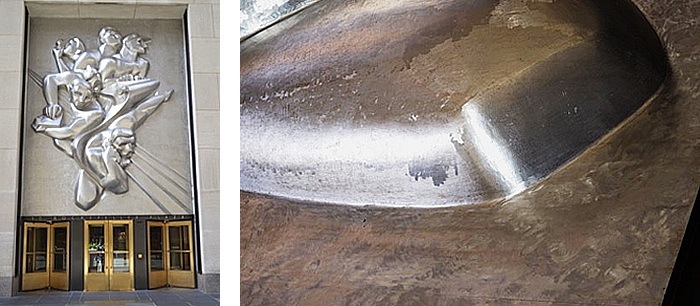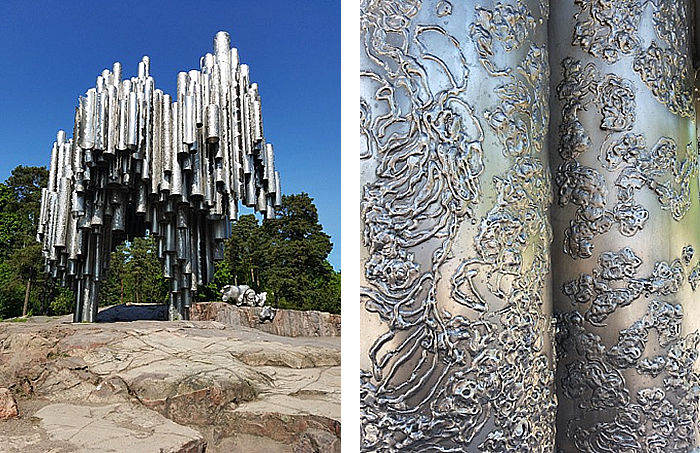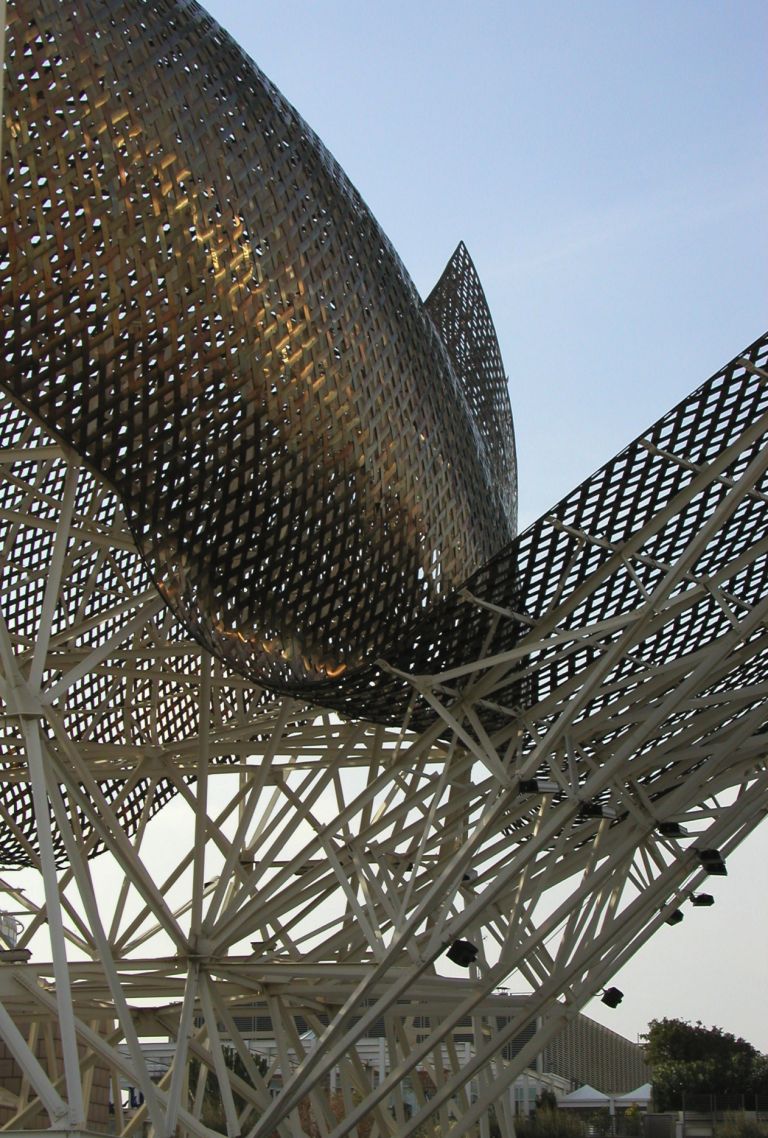Over the ages, sculptors have sought materials that can withstand the elements and last for generations. The use of stainless steel in New York City’s 1930s buildings inspires sculptors even today. Isamu Noguchi convinced the Associated Press to approve the use of stainless steel instead of bronze for his famous sculpture News – an Art Deco plaque depicting five journalists ‘getting a scoop.’ It has been installed above the entrance of 50 Rockefeller Plaza since 1940. This famous 9.1-ton relief, 6.7 m (22 ft.) high by 5.2 m (17 ft.) wide, was the world’s first large cast stainless steel sculpture.

News Sculpture, Photo credit Catherine Houska, TMR Consulting
However, the Type 302 (equivalent to today’s 304) stainless steel must be regularly cleaned and clear-coated to protect it, because it would stain otherwise. More corrosion-resistant stainless steels were not available at the time. The introduction of deicing salt has made the coastal city even more corrosive to materials. Unfortunately, coating failure between applications detracts from the appearance as can be seen in the image. Therefore, Type 316/316L or the even more corrosion-resistant 2205 duplex stainless steel have been used for more recent New York area buildings, sculptures and monuments. Examples include the New Jersey “The Empty Sky”, US national (New York) and Pentagon 9/11 Memorials. These more resistant alloys protect against corrosion and minimize maintenance requirements.

Jean Sibelius Monument, Photo credit Catherine Houska, TMR Consulting
One of Helsinki’s most important landmarks, the Jean Sibelius monument designed by Finnish artist Eila Hiltunen, honors the composer and violinist. Unveiled in 1967, its 600 hand-textured silvery tubes of various diameters reflect the changing seasons and resonate with the wind, echoing bird song. Since this is a coastal city, Type 316 stainless steel was selected and it has performed beautifully. The tubes are up to 8.5 m [28 ft.] in length and the sculpture weighs 24 tonnes. A smaller version of the sculpture can be found at the United Nations Educational, Scientific and Cultural Organization (UNESCO) headquarters in Paris.



